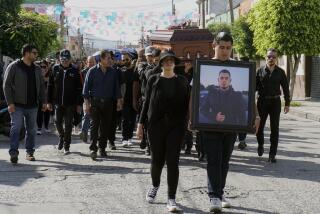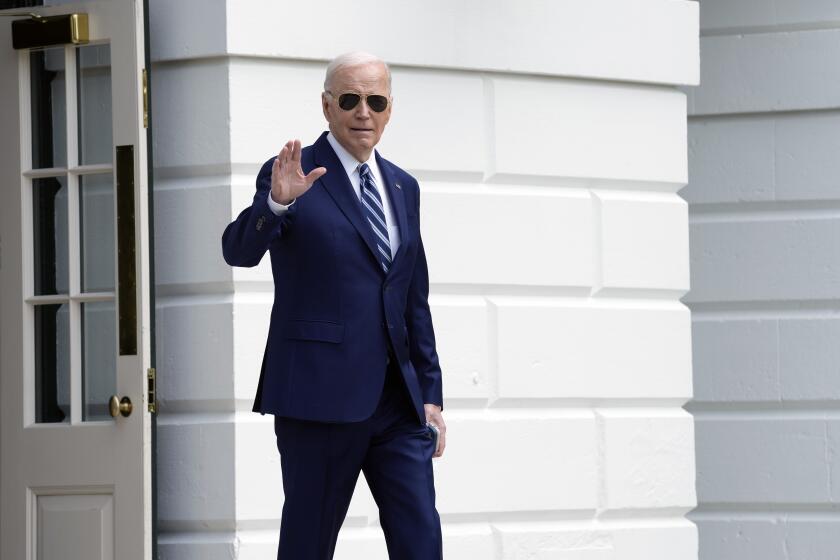In Mexico, Tamaulipas state residents rise up against cartel violence
Arsonists torched four restaurants, bars and an auto dealership. A bomb threat evacuated a hospital. Bodies turned up, including a headless one at someone’s door and a man snatched from the Wal-Mart store and dumped in a field. Gun battles raged within earshot of the main drag, Boulevard Hidalgo.
And that was just one recent three-day period in Tampico, Mexico, where business after business along that thoroughfare has closed, “for rent” or “for sale” signs dominate and few people venture out at night.
A battle between rival factions of one of the country’s major drug cartels has unleashed a spasm of violence in Tamaulipas, the border state where Tampico is a major city, leaving dozens killed and numerous people missing in the last two months. Residents of Tamaulipas, which is key to Mexico’s goal of attracting foreign investors to its oil industry, fear a return to the bloody days of 2010, when hundreds of people died and communities lived in terror.
The region had been relatively peaceful until the last few months, in part because drug cartels had carved out and settled on territory and reigned supreme. A key difference with the current wave of violence is that citizens are protesting, staging several marches and appealing to federal authorities for help.
“They let this problem, the narcos, grow for so many years that it’s a monster now,” said Eduardo Cantu, a 49-year-old Tampico businessman who is leading some of the protests, which operate under the slogan “The good guys outnumber the bad guys.”
“We are so fragile,” Cantu said, “and our authorities are so evil.”
President Enrique Peña Nieto, who sought to downplay security issues in his first year and a half in power, was pushed into sending army troops into Tamaulipas and essentially supplanting corrupt and ineffective local officials with new leaders. He divided the state into four sections, fired lots of local police officers and appointed an overlord for each region.
It is crucial for the president to present a tranquil Tamaulipas in anticipation of investment by foreign oil companies taking advantage of a new energy policy that will open up the industry. Most of Mexico’s extensive oil reserves are off the coast of Tamaulipas, and the state was the historical center for the country’s petroleum industry beginning more than a century ago.
Tampico, a city of palm trees, steamy lagunas and the occasional wandering crocodile, is a major port on the east coast and a natural entry point for cocaine and other contraband from South America.
Security began to deteriorate in early April after several regional captains of the Gulf cartel and the Zetas gang were killed or captured, leaving mid- and lower-level lieutenants to vie for control of territory and trade.
“They are like the Sopranos of New Jersey,” said David Gomez Fuentes, rector of the Tamaulipas Institute of Superior Studies, a university outside Tampico. Matriculation at the Roman Catholic school has fallen by 20% amid the violence and the number of foreign students has declined from about 60 to five in the last few years.
As he spoke, his smartphone pinged repeatedly with the latest news of violence, pictures of atrocities or warnings of places to avoid in the city.
Although most of the fighting has been between factions of the Gulf cartel, passersby have been caught in the crossfire. Residents say as many as 40 shootouts were reported — via social media, but not by officials or local press — between April 22 and 26, including one in a movie house. Parents became so terrified that most schools shut down for three days in April, and families were reluctant to let students return to class after the Easter break.
“I was convinced it was all behind us,” Tampico Mayor Gustavo Torres Salinas said in an interview. “I’m not afraid we will return to the situation of four years ago; we’ve gotten accustomed to this. But it is worrisome nevertheless.”
Two weeks before the renewed fighting began, Torres traveled to Houston to invite Tampiquenses there to return because, he told them, conditions were improved and the city was ripe for investment.
Then, as the gun battles erupted, he infamously told the public, “Nothing is going on here.” Many residents have yet to forgive that apparent callousness and head-in-the-sand attitude, as they have had to dramatically alter their ways of life.
“We are in a war; that’s the reality,” said Daniel Hernandez Muñiz, who heads a parents organization and runs an advertising firm. “Thanks to cellphones, we have fewer dead. Every morning we check at 7 a.m. to decide whether we go out or not.
“The children are losing every day. A kid in Tamaulipas is not the same as a kid in Mexico City or Puebla,” Hernandez said, alluding to safer areas of Mexico. His advertising business has declined 40% in recent months, he said, because companies have either fled or are afraid to have a high profile.
Col. Jesus Gabriel Lopez, the army commander for the Tampico region, guided a reporter through the Morelos neighborhood, site of various battles and where seven bodies turned up in a pickup truck on May 18.
Stares from many idle men seated on door stoops were hard and unfriendly as Lopez’s U.S.-made Sand Cat armored personnel carrier, with some of the latest video equipment available scanning the road ahead and behind, moved through the narrow streets.
As part of its strategy, the military is staging lightning-speed roadblocks, set up suddenly and without warning and then dismantled after about 10 minutes of searching most passing cars.
Armed soldiers in camouflage uniforms and helmets incline toward stopping men who are heavily tattooed, groups of men traveling together and taxi drivers with odd-looking passengers. On this particular day, they came up empty.
“Most [detention] activity is at night,” Lopez said. “If we see cars after 10 p.m., we know they belong to them,” he said, referring to the criminals.
Ordinary people “do not go out at night,” he said.
The fighting has boiled down to two factions, Lopez said, with the much larger one calling itself Los Fresitas, or “the Little Strawberries.” The group seems to be gaining the upper hand and is behind most of the arson attacks, targeting enemies’ businesses, and the slayings.
“In the short term, we think the larger group will eliminate the smaller one, and there will be a kind of stabilization.... The executions will end,” Lopez said. But that will not end the extortions, kidnappings, drug-running or other crimes, he said.
In an effort to calm the region, the national government, its eye on future oil investment, has eagerly met with Cantu, the protest leader, and other civic activists.
“If you don’t pacify Tamaulipas, how do you make it secure for all those English and American and Australian families that will be coming here [attached to] their oil company headquarters?” Cantu said. “They will need guarantees.”
The protesters’ strategy, he said, is to use the federal government’s agenda to the advantage of Tampico residents.
“We could ask for the mayors, even the governor, to be replaced, but would it really change anything?” Cantu said. “This is about conquering fear, a desire to recover the city, avoid return to 2010 when city became a ghost town.”
In the first march that Cantu and others organized, about 500 people attended. In the second one, there were more than 10,000. As they set out, many received Twitter photos of cars being set afire — a clear message of intimidation.
More to Read
Start your day right
Sign up for Essential California for news, features and recommendations from the L.A. Times and beyond in your inbox six days a week.
You may occasionally receive promotional content from the Los Angeles Times.







